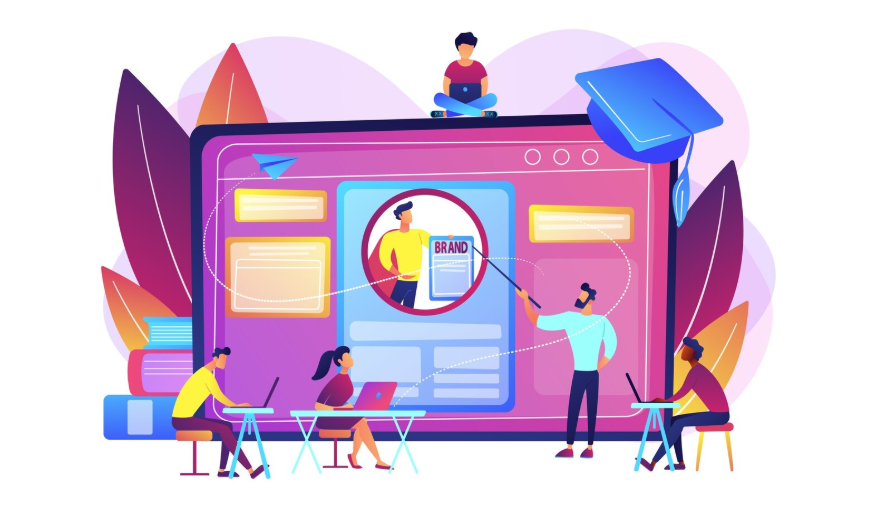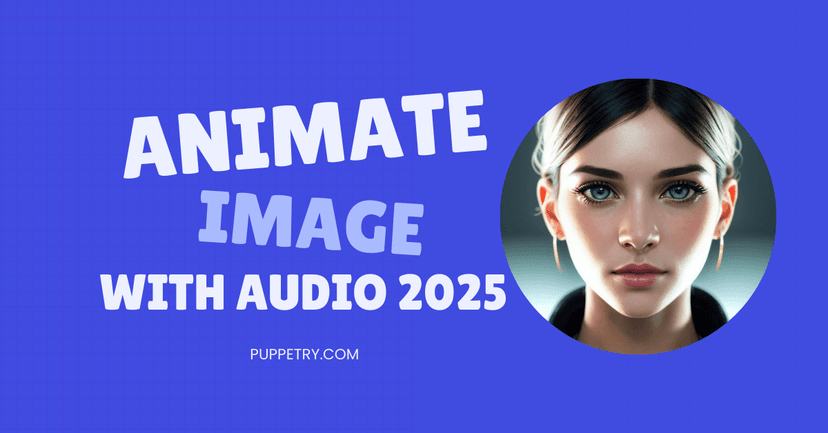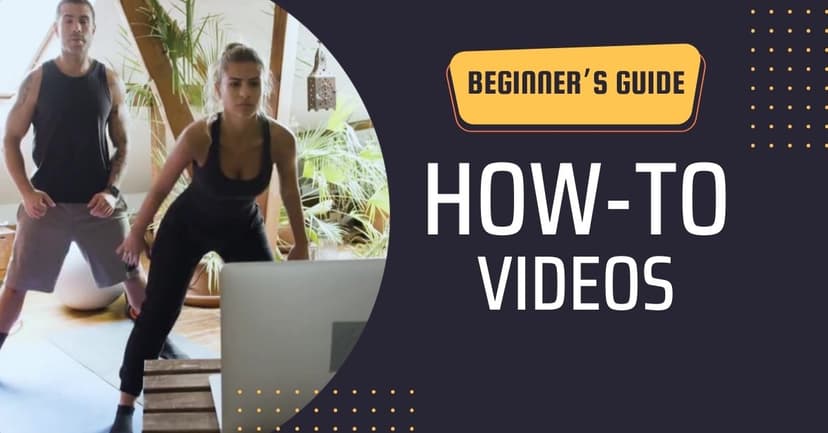Figuring out how to create an online course can feel overwhelming, though. Puppetry and AI can make online course creation so much easier (and stress-free!). You can plan lessons effortlessly and even write scripts.
Creating and selling digital courses is one of today’s smartest ways to share knowledge. More importantly, it’s a proven method for generating extra income, gaining a bigger portion in a robust market worth over $335 billion annually, which experts say can reach $400 billion in 2026.
Figuring out how to create an online course can feel overwhelming, though. Puppetry and AI can make online course creation so much easier (and stress-free!). You can plan lessons effortlessly and even write scripts.
Building quizzes and evaluating learner knowledge are easy, too. Any teaching-learning activity is so much easier with AI-powered videos and images delivering everything.
AI makes course creation faster, easier, and more professional. Yes, even for beginners. In this guide, we’ll show you exactly how to turn your ideas into a standout online course using the power of AI.
What Makes Online Courses So Powerful Today?

Image by pikisuperstar on freepik
Online courses are no longer a niche alternative to learning. Now, it’s mainstream! So, what makes online courses so powerful today? We’re looking at accessibility, adaptability, and technological innovation.
So, what are online courses?
Online courses aren’t your traditional learning venues (classrooms). They break down geographical and financial barriers, empowering virtually anyone (who wants to learn something) across the globe to access high-quality education using only a reliable internet connection.
Flexibility is another game-changer. Students can learn at their own pace. They could be balancing full-time jobs and parenting, or simply prefer studying at midnight in their pajamas. This freedom fosters self-directed learning and improves retention by letting learners revisit materials as needed.
Technology helps, too! For instance, AI-driven learning platforms personalize content delivery. You can have virtual labs that simulate hands-on experiences and interactive tools that keep student engagement high. These aren’t nice-to-haves. Instead, they’re essential in reshaping how we learn.
Moreover, online learning is more relevant than ever in a fast-changing world. Courses can be updated quickly. You can align your course content with real-world trends and employer needs. This agility supports lifelong learning and makes reskilling or up-skilling more practical than ever.
If you ever wondered about the AI-powered future of education, this is it! It’s a future that’s inclusive, intelligent, and driven by the needs of modern learners.
It’s not just about convenience. It’s about creating new opportunities and closing educational gaps. More importantly, it builds a workforce ready for tomorrow’s challenges.
The power of online courses lies in their ability to adapt, evolve, and empower.
The Secret Ingredients of a Great Online Course

Image by storyset on freepik
Every successful online course is more than just video lectures and downloadable PDFs.
An excellent online course is designed with the learner in mind. It blends structure, interactivity, and relevance to create an engaging and transformative experience.
Clear Structure & Outcomes
Great courses are organized, with clearly defined learning goals and a logical flow. Bite-sized lessons help learners progress without feeling overwhelmed.
Interactive Content
Quizzes, polls, drag-and-drop activities, and real-time simulations keep students actively engaged and help reinforce key concepts.
Personalized Learning with AI
AI trends in education are revolutionizing online courses by adapting content to suit each learner’s pace, preferences, and progress. Smart feedback and dynamic pathways enhance retention.
Real-World Application
Case studies, industry examples, and project-based tasks bridge the gap between theory and practice, making learning more relevant and career-focused.
Engaging Multimedia
A mix of video (including AI-powered videos), audio, infographics, and animations (like AI-generated avatars and puppets) caters to different learning styles and keeps content fresh and digestible.
Access to Instructors & Community
The best courses offer some form of mentorship, live Q&As, or peer forums to create a sense of connection and support.
Progress Tracking & Motivation
Features like badges, progress bars, and personalized dashboards help learners stay on track and motivated to complete their goals.
Up-to-Date Content
Regular updates and alignment with current industry standards keep courses fresh. These are especially important in rapidly evolving areas like tech and business.
Lights, Camera, Curriculum: Your Step-by-Step Online Course Creation Guide

Image by vectorjuice on freepik
Building a high-quality, engaging course doesn’t require film school credentials or fancy studio equipment. With a solid plan and the right digital tools, you can deliver a powerful learning experience from the comfort of your laptop. Here’s how.
Step 1: Define Your Learning Goals
Begin with clarity. Ask yourself what your students should be able to do after taking your course. For example, do you expect them to excel at using Puppetry as a teacher? Remember that strong learning outcomes set the stage for success.
Step 2: Structure Your Course
Break your content into digestible modules and lessons. Each module should focus on a specific topic and include supporting materials like worksheets, mini quizzes, or real-world examples.
Step 3: Decide How You’ll Present Content
Worried about being on camera? You’re not alone. Here’s a smart solution. Learn how to create video lectures without camera, including:
-
Screen recordings of slides with voiceovers
-
Animated explainers using tools like Vyond
-
AI-powered avatars reading your script
-
Whiteboard-style drawing AI-generated learning videos
These methods keep learners engaged without putting your face front and center.
Step 4: Create Interactivity
The most successful online courses don’t just talk at learners. They involve them! So, you will want to include interactive elements like quizzes, polls, drag-and-drop exercises, and scenario-based tasks to boost engagement.
Step 5: Choose Your Platform
Think about your needs. Are you looking for a hassle-free, simple teaching hub? How about a fully-fledged business platform? Tools like Teachable, Thinkific, or Podia offer different features like email automation, discussion forums, and drip scheduling.
Step 6: Produce and Polish
Good production doesn’t mean high cost. You can invest in a decent microphone and keep your visuals clean. Moreover, you will want to focus on clear narration. Edit using free or affordable tools like Camtasia, iMovie, or DaVinci Resolve to give your course a polished finish.
Step 7: Add a Touch of Creativity
If you want to stand out, you might want to consider creative teaching techniques, especially if you’re targeting younger learners or visual subjects. A fantastic option is to use AI puppets for e-learning.
Use tools like Puppetry to create animated characters that guide learners, act out scenarios, or role-play difficult concepts. This technique is not only fun but also incredibly effective for building connection and memory retention.
Step 8: Launch, Learn, and Improve
Once your course is live, gather feedback and monitor student progress. You will want to continuously refine your content. After all, online learning thrives on evolution.
Anyone can become an educator in today’s digital world. It doesn’t matter if you’re camera-shy (there’s Puppetry to help) or creatively inclined.
Bringing your online curriculum to life is so much easier today with AI tools like Puppetry. Your course. Your style. So, hit “record” and let learning begin.
Smarter Teaching with AI: Your Next Move
Artificial Intelligence is no longer just a buzzword. It’s transforming how we teach, learn, and engage with content.
Educators can personalize learning with AI tools. They can automate repetitive tasks and boost student outcomes.
It’s like having a virtual assistant that analyzes quiz results to suggest targeted revisions. It’s a system that adapts lessons in real-time based on each student’s pace and preferences.
Creating smarter quizzes is easier, too. Moreover, you can generate instant feedback and track your learner’s progress with AI-powered learning tools. This tech can even translate lessons for multilingual classrooms.
They say teaching is a time-consuming vocation. Not with AI. You can create online lessons with voice-to-text tech and make learner review materials more efficient with AI-generated summaries. You can even rely on intelligent grading systems to get these worries off your back (and mind).
You can always start small as your next move. Exploring different AI-powered learning platforms like Quizizz and Gradescope should help you understand (and value) the growing importance of online learning, and, who knows, you might find online teaching more fun and rewarding than you previously imagined.
Embracing AI means working with technology to become a more effective, agile educator in an ever-evolving classroom.
Final Thoughts
Teaching online today is more creative and flexible than ever. The tools are here to help you teach smarter, not harder. You’re not only keeping up with trends, leveraging AI and innovation. You’re shaping a powered future of education. So take that next step. Your best course is still ahead.



